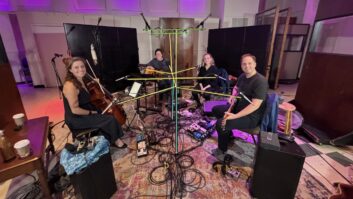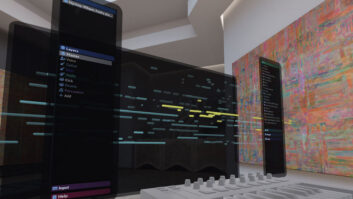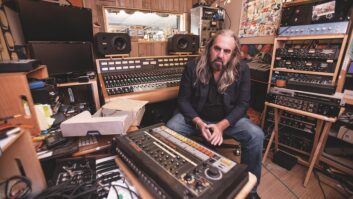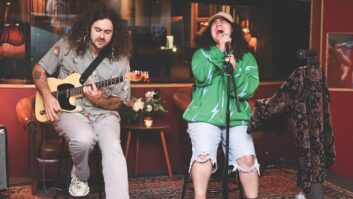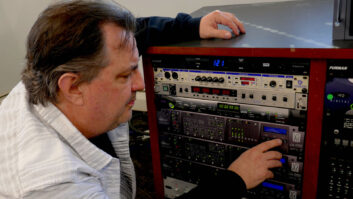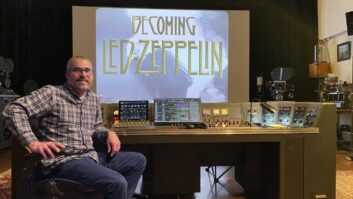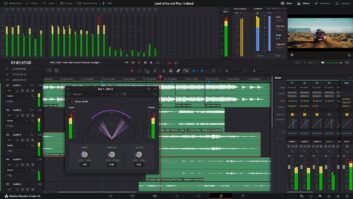Mozart’s music is central to the drama of Amadeus — manifesting itself as a key character, both onscreen and off-screen — and it was treated as such by the Saul Zaentz team. To edit the music for the Director’s Cut, the production team turned to veteran Robert Randles, an accomplished music editor with credits ranging from Conan the Barbarian to Seven, The Talented Mr. Ripley and The English Patient (for which he won a Golden Reel award).
Walk us through the timeline of this project. How and when did you get involved?
I was approached early on in the Director’s Cut — about a year-and-a-half ago. While the picture was being re-edited, [picture editor] Tom Christopher would informally bring me in once in a while to help him work through some music issues. When I first laid my hands on the materials, I felt like I had been given my own keys to a museum. I was in awe, delving through [conductor and music director] Neville Marriner’s own scores and reading his notes. All the tracks were amazingly well-preserved, with John Strauss’ [who composed original music for the film] and [original music editor] Mark Adler’s notes on the leader, the mag and in the cue sheets, leaving little doubt as to what was to be used where and how.
How would you describe your role as music editor on this re-release?
One extreme rarity about Amadeus is the extent to which the music was meticulously planned and recorded for each scene before the film was shot. The obvious intention had been that the picture would conform to the music, and the music would be left in pristine condition. However, contrary to myth, there are hundreds of music edits in the score. Then there are the normal technical edits, and it adds up to a dozen or so mag film machines playing back all the overlapping edits.
My goal, therefore, was to make the already sliced-and-diced score conform to a newly sliced-and-diced picture without anybody noticing. My advantage is that I’m working with digits on a computer, and I am afforded the luxury, for example, of being able to fashion elaborate track-independent crossfades in the privacy of my own cutting room. That allows me to come up with multiple solutions and let the group decide which one they like the best.
Would you say, then, that your main goal was to maintain seamlessness and consistency?
Well, there were really four main things I was focusing on. My first step was to reconstitute all of the original edits so that they would play back with seamlessness and consistency, as you say, and not force the mixer to turn handsprings. The next step was to make all the music work along with the new version of the picture. There was then the task of making previously recorded, but unused, music work with new scenes. And finally, there was the question of new music.
I understand there’s a new scene involving a piece for glass harmonica…
The scene immediately follows Costanza’s devastating humiliation by Salieri, which is now a really powerful part of the story. She’s crying in bed, and Wolfgang tries to comfort her, not knowing why she’s upset.
Based on Tom [Christopher’s] description of the scene, I suggested a relatively obscure piece Mozart had written for an instrument invented by Benjamin Franklin, the “Adagio for Glass Harmonica.” Benjamin Franklin attended a concert in London where he heard somebody play a set of wine glasses tuned by partially filling them with water. Being Benjamin Franklin, he came up with a better solution — a sort of rotisserie of nested, tuned glasses laid out like a keyboard, turned by foot treadle. Leopold [Mozart, the father] and Wolfgang were both fascinated by the sound of the instrument, and Wolfgang wrote this piece for a blind harmonica performer. We got a copy of the piece recorded by the late Bruno Hoffman as a temporary place-holder.
As the dub drew near, however, a couple of issues came up. One was that the sound quality of the recording didn’t come up to the standards of the rest of the score. Another was that Bruno Hoffman had played it on a glass harp — goblets filled with water — which meant that it was physically impossible to play all the notes that Mozart had written. Hoffman’s tempo, however, was slower and suited the scene better than other recordings. On the Thursday before a Monday final dub, I talked it over with Saul [Zaentz], and we decided to record the piece anew.
My assistant, Ling Ling Li, tracked down harmonica virtuoso Thomas Bloch in Finland, and arranged for the flute, oboe, violin and viola players to meet him in Belgium to record at Galaxy on Saturday, two days later. My hands were full preparing for the dub, so during the session I was talking to them by phone while they were sending each take over the Film Center’s T1 line.
Tell me a little bit about the equipment setup.
Randall Sanderson had asked me to evaluate the WaveFrame FrameWorks DX system; about the same time, [conductor] Kent Nagano and the Berkeley Symphony were needing help on a CD, so Jim Austin [as engineer and mixer] and I took that on using the FrameWorks. We were so impressed that when Amadeus came along, we said, why not?
We used Prism converters after pitting them against several others in listening and reliability tests. After making sure that no one involved wanted to dub from analog, we then began the painstaking process of transferring all of the music from the original Amadeus in all of its various forms at 24 bits/96 kHz onto the FrameWorks hard drives.
There was one thing that they did on the original Amadeus that I have never seen before. When they mixed each piece of music onto 6-track mag, they made individual tone rolls for each piece and included them in the archived dubbing units. This meant that, even though it had been impractical in the 1984 dub to stop and retone a dozen or so machines every time a new piece of music played back — think of the medley where Salieri is reading through Mozart’s scores — this afforded us the opportunity to take our time to re-tweak everything for each transfer of each piece onto the hard drive. We were also using Sondor machines to play back the mag, which use much more advanced transport and audio electronics than were available in 1984. We transferred each and every cut-mag element, since those were the actual mixed masters, as well as the stems, and in some cases, the original 24-track masters.
Any final thoughts? Any other big challenges?
Just giving Mark Berger and Todd Boekelheide the music materials in a form that was easy to work with, and to free them as much as possible from technical issues so they could concentrate on aesthetics. The net result is spectacular, and the sound of Amadeus: The Director’s Cut has a clarity and sparkle that retains the aesthetics of the original picture, yet improves upon, and further develops, the classic we had known and loved. It may be titled The Director’s Cut, but it’s really the Director, Producer, Writer, Conductor and Much of the Original Post Production Team Reconsidering and Polishing Up Their Original Draft Cut, along with some new helpers.
